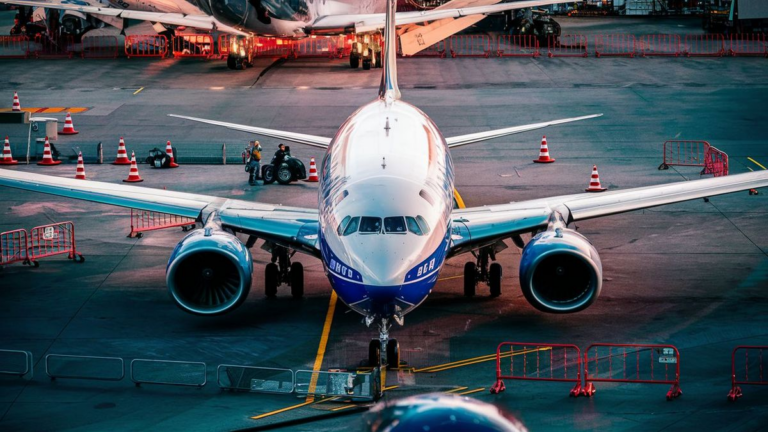In recent aviation history, the grounding of Boeing planes has been a topic of significant concern and discussion. This article aims to provide comprehensive insights into the instances where Boeing aircraft faced grounding, shedding light on the reasons, consequences, and industry implications.
The Boeing 737 MAX Crisis
The most notable incident in recent years involves the Boeing 737 MAX series. The entire fleet faced global grounding following two tragic accidents – Lion Air Flight 610 in October 2018 and Ethiopian Airlines Flight 302 in March 2019. These disasters raised serious questions about the safety of the 737 MAX aircraft and prompted aviation authorities worldwide to take swift action.
Investigations revealed a critical flaw in the Maneuvering Characteristics Augmentation System (MCAS), an automated system designed to prevent stalling. The malfunctioning MCAS played a pivotal role in both accidents, leading to a loss of control of the aircraft. In response, aviation regulators, including the Federal Aviation Administration (FAA), ordered the grounding of all Boeing 737 MAX planes to address the identified safety concerns.
Global Ramifications
The grounding of the Boeing 737 MAX had far-reaching consequences for airlines, manufacturers, and the aviation industry as a whole. Airlines had to adjust schedules, reassign aircraft, and face financial losses due to the prolonged grounding. Boeing, on the other hand, encountered severe economic setbacks, with production halts, order cancellations, and a damaged reputation.
Regulators around the world worked closely with Boeing to implement necessary changes and enhancements to the 737 MAX’s design and software. The aircraft underwent rigorous recertification processes before being allowed to resume commercial flights. The incident highlighted the importance of robust safety measures and regulatory oversight in the aviation sector.
Previous Grounding Incidents
While the Boeing 737 MAX grounding is the most recent and widely publicized, it’s not the only time Boeing planes have faced such measures. Historical incidents include the grounding of the Boeing 787 Dreamliner fleet in 2013 due to battery issues. The lithium-ion batteries installed on the aircraft had a tendency to overheat, posing a potential fire risk.
Boeing worked diligently to address the battery problems, implementing design changes and enhanced safety measures. Once the necessary modifications were made and approved by aviation authorities, the Dreamliner fleet was allowed to resume operations.
Continuous Improvement and Safety
These grounding incidents underscore the aviation industry’s commitment to continuous improvement and ensuring the utmost safety for passengers and crew. Manufacturers like Boeing invest heavily in research, development, and collaboration with regulatory bodies to address any identified issues promptly.
As technology evolves, aviation authorities and manufacturers must remain vigilant to maintain and enhance safety standards. The lessons learned from past incidents contribute to ongoing efforts to make air travel even safer for everyone involved.
Boeing 777 Engine Failures
In more recent events, the aviation industry faced challenges with the Boeing 777 following engine failures. The incidents involved Pratt & Whitney PW4000 engines, leading to emergency landings and debris falling in residential areas. As a response, aviation authorities issued directives for enhanced inspections and temporary groundings of certain Boeing 777 aircraft equipped with the affected engines.
These engine failures prompted thorough investigations into the root causes, focusing on design flaws and manufacturing issues. Airlines and regulators collaborated to implement immediate safety measures, affecting operational schedules and requiring comprehensive inspections of the engines to ensure passenger safety.
Industry Collaboration and Safety Measures
Similar to past grounding incidents, the Boeing 777 engine failures highlighted the importance of industry collaboration and swift safety measures. Airlines worked closely with aircraft manufacturers and regulatory bodies to address the identified concerns and restore confidence in the safety of Boeing 777 aircraft.
| Grounding Incident | Affected Aircraft | Root Cause |
|---|---|---|
| Boeing 737 MAX | 737 MAX series | MCAS system malfunction |
| Boeing 787 Dreamliner | Dreamliner fleet | Lithium-ion battery issues |
| Boeing 777 Engine Failures | 777 aircraft with PW4000 engines | Design flaws and manufacturing issues |
Frequently Asked Questions
- Q: How did the Boeing 737 MAX crisis impact the aviation industry?
- A: The grounding of the 737 MAX led to significant disruptions for airlines, manufacturers, and the industry at large, with financial losses, production halts, and a focus on safety improvements.
- Q: Were there other instances of Boeing planes being grounded?
- A: Yes, historical incidents include the grounding of the Boeing 787 Dreamliner in 2013 due to lithium-ion battery issues, emphasizing the industry’s commitment to continuous improvement.
- Q: How did the aviation industry respond to the Boeing 777 engine failures?
- A: The industry responded with collaborative efforts, conducting investigations, implementing safety measures, and issuing directives for inspections to address the identified design and manufacturing concerns.
See also:






